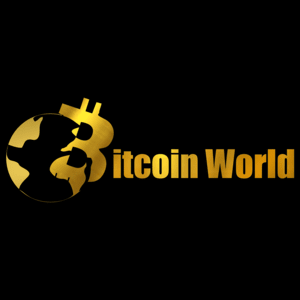Tokenized U.S. Treasurys: Six Funds Powerfully Dominate the Exploding Market
6 min read
Have you been following the explosive growth in the world of digital assets beyond cryptocurrencies? One area that’s been gaining significant traction is the tokenization of real-world assets (RWAs), particularly Tokenized U.S. Treasurys . While this market is still relatively young, recent data highlights a striking concentration: just six funds currently hold a staggering 88% of the total assets in this burgeoning sector. This isn’t just a statistic; it reveals a lot about the current landscape and the major players shaping the future of finance. Understanding the Rise of Tokenized U.S. Treasurys Before diving into who holds the lion’s share, let’s quickly touch upon what Tokenized U.S. Treasurys are. Essentially, they are digital tokens issued on a blockchain that represent ownership or a claim on traditional U.S. Treasury bonds or bills. This process leverages blockchain technology to bring the benefits of traditional, stable assets into the digital asset ecosystem. Think of it as bridging the gap between traditional finance (TradFi) and decentralized finance (DeFi). The appeal is clear: investors in the digital asset space can access the safety and yield typically associated with U.S. government debt, often considered one of the safest investments globally, without necessarily leaving the blockchain environment. This opens up new possibilities for portfolio diversification and yield generation within the digital asset landscape. Who Holds the Majority? The Dominant Players in Tokenized Assets According to data from RWA.xyz, as cited by Cointelegraph, the concentration in this market is undeniable. Six specific funds stand out, controlling the vast majority of Tokenized U.S. Treasurys . This level of concentration isn’t necessarily unusual for a nascent market, especially one involving large financial institutions, but it’s certainly noteworthy. Here are the key players leading the charge: BlackRock’s BUIDL: Leading the pack by a significant margin, BlackRock’s BUIDL fund holds approximately $2.5 billion in assets. BlackRock’s entry into this space signals a major endorsement from a traditional finance giant, attracting significant capital and attention. Franklin Templeton’s BENJI: Another major asset manager, Franklin Templeton, is a key player with its BENJI fund, holding around $707 million. Superstate’s USTB: Superstate also holds a substantial position with its USTB fund, accounting for roughly $661 million. Ondo’s USDY: Ondo Finance is a prominent name in the RWA space, and their USDY tokenized note holds about $586 million. Circle’s USYC: Known primarily for its USDC stablecoin, Circle also offers a tokenized Treasury product, USYC, with assets around $487 million. Ondo’s OUSG: Ondo appears again with its OUSG fund, holding approximately $424 million, further cementing its position in the tokenized RWA market. Combined, these six funds represent a significant portion of the total market capitalization for Tokenized U.S. Treasurys , illustrating that while the market is growing, it is currently dominated by a few key issuers. Why This Concentration in the RWA Market? The high concentration among a few funds can be attributed to several factors: Institutional First Movers: Large financial institutions like BlackRock and Franklin Templeton have the brand recognition, infrastructure, and capital to launch such products at scale, attracting significant initial investment. Regulatory Navigation: Tokenizing securities involves navigating complex regulatory landscapes. Larger, established players are often better equipped to handle these challenges. Liquidity Aggregation: Centralizing assets within larger funds can potentially offer better liquidity for investors compared to a highly fragmented market. Investor Trust: Investors, especially institutions exploring Digital Assets , may initially prefer to allocate capital to products offered by well-known and trusted financial brands. This concentration suggests that the initial phase of growth in Tokenized Assets representing traditional securities is being led by established financial entities, bridging their existing client base and expertise with blockchain technology. What are the Benefits of Tokenizing Treasurys? Despite the concentration, the underlying technology and asset class offer compelling advantages: Increased Accessibility: Tokenization can lower the minimum investment threshold for accessing Treasurys, potentially opening them up to a wider range of investors globally. Improved Liquidity: While still developing, the goal is to enable peer-to-peer transfers and potentially faster settlement times on-chain compared to traditional markets. Transparency: Transactions recorded on a public or permissioned blockchain can offer a level of transparency not always present in traditional finance. Programmability: Tokenized assets can potentially be integrated into DeFi protocols, enabling new financial applications like using them as collateral for loans. Faster Settlement: Blockchain settlements can occur in minutes, compared to the T+2 (trade date plus two days) settlement cycle common in traditional bond markets. These benefits are driving interest and adoption, even if the market is currently top-heavy. Are There Challenges to Widespread Adoption? Absolutely. The path to widespread adoption of Tokenized Assets , including Treasurys, isn’t without hurdles: Regulatory Uncertainty: The regulatory treatment of tokenized securities varies across jurisdictions and is still evolving, creating uncertainty for issuers and investors. Interoperability: Ensuring these tokens can seamlessly interact across different blockchains and traditional financial systems is crucial. Custody Solutions: Secure and reliable custody solutions for tokenized securities are still developing. Market Education: Educating traditional investors about the benefits and risks of digital assets and tokenization is necessary for broader adoption. Liquidity Development: While potential for improved liquidity exists, the market needs to mature significantly to rival the deep liquidity of traditional Treasury markets. Overcoming these challenges will be key to expanding the market beyond the current dominant players and attracting a more diverse range of participants. What’s Next for Tokenized Assets and RWA? The current concentration, led by initiatives like BlackRock’s BUIDL , could be seen as a stepping stone. As the market matures, we might see increased competition, more diverse offerings, and potentially a broader distribution of assets across more funds and individual investors. The trend of bringing RWA onto the blockchain is likely to continue, extending beyond Treasurys to other asset classes like real estate, private equity, and more. The infrastructure being built now by these early movers is paving the way for potentially significant shifts in how traditional assets are owned, traded, and managed in the future. Actionable Insights for Investors If you’re interested in the Tokenized U.S. Treasurys space, here are a few points to consider: Research the Issuers: Understand the fund manager, their track record, and the specific structure of the tokenized product (e.g., yield mechanism, underlying assets, blockchain used). Understand the Risks: Tokenization introduces new risks related to smart contracts, blockchain security, and regulatory changes, in addition to the market risks of the underlying asset. Evaluate Accessibility: Check which platforms or exchanges list these tokens and ensure they are accessible from your location. Consider Your Portfolio: Assess how tokenized Treasurys fit into your overall investment strategy and risk tolerance. This market is dynamic, and staying informed about developments, particularly concerning key players and regulatory shifts, is essential. Compelling Summary: A Concentrated Beginning for Tokenized Treasurys The data showing six funds holding 88% of Tokenized U.S. Treasurys highlights the early-stage nature and institutional dominance of this market. Led by giants like BlackRock with its BUIDL fund, this concentration is a natural phase as large players leverage their resources and trust to build initial infrastructure and attract capital. While challenges related to regulation, liquidity, and education remain, the underlying benefits of tokenization – increased accessibility, transparency, and potential for integration with Digital Assets – suggest a promising future. The RWA market is clearly gaining momentum, and while currently concentrated, it represents a significant step towards bridging traditional finance with the innovative world of blockchain. To learn more about the latest digital asset trends and the evolving RWA market, explore our articles on key developments shaping the future of tokenized assets and institutional adoption.

Source: Bitcoin World



